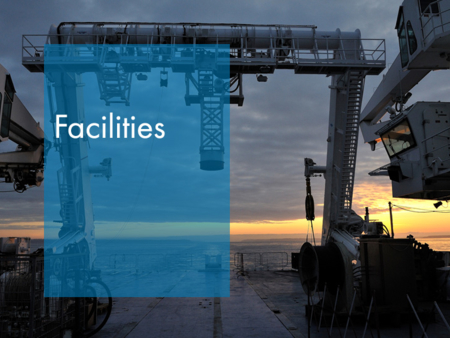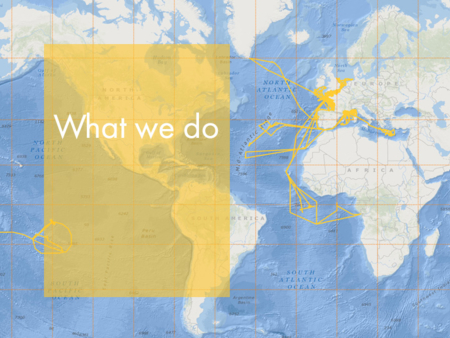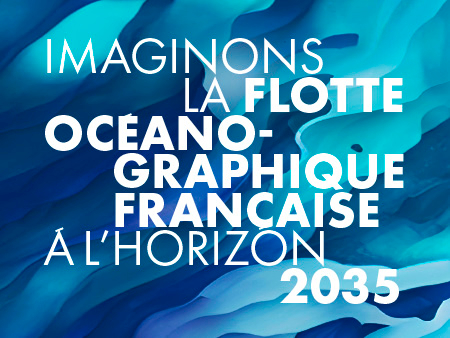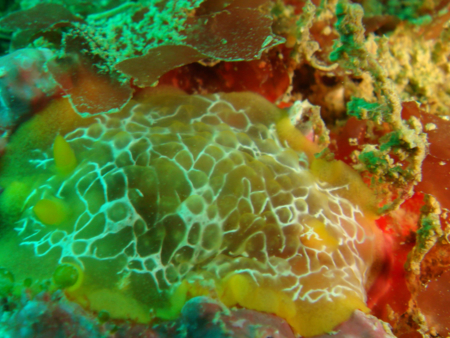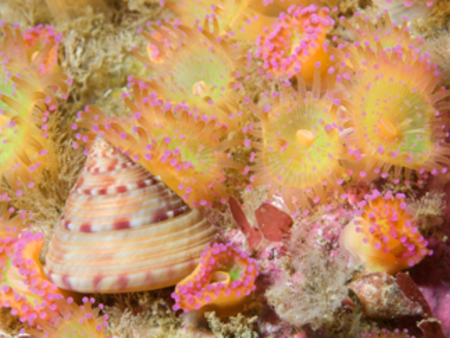Long-range planning
Coordination : Catherine Jeandel, CNRS, LEGOS, Université de Toulouse
Thanks
The first long-range planning for the “French Oceanographic Fleet” (FOF) Very Large Research Infrastructure (TGIR) could not have been completed without voluntary, active participation from many representatives from the FOF user community. As the FOF is multi-purpose, this long-range planning has received contributions from players in fundamental research in all fields of oceanography, teachers who run on-board teaching, engineers and technicians in charge of instrument and RTD pools, and finally, public service mission players, particularly sea fishermen and engineers overseeing framework directive constraints (on water, on the marine environment strategy namely WFD and MSFD).
This work took place between November 2016 and the end of April 2017, 6 intensive months during which the members of 10 work groups have interacted actively either within their group or with their colleagues in the labs, spreading the enquiry as wide as possible. This involved many multi-site video conferences. Group leaders were particularly active in terms of sending me feedback from all levels. Meetings took place regularly with the fleet mission team commissioned by the CEO of Ifremer. Exchanges also took place with members of the National Open Sea and Coastal Commissions, with members of the Strategic and Scientific Guidance Committee and members of the FOF Management Committee. More unexpectedly, I have met several innovative project managers from private ships and champions of possible proposals for the scientific community.
This introduction gives me the chance to express my thanks to all these players who were dynamic, sincere and constructive to work with. The complete list of participants appears in appendix 2 of this document.
This exercise was carried out with great freedom among all FOF users to say what they thought and led to numerous contradictory and constructive conversations. I would particularly like to thank François Jacq, Pascale Delecluse and Frédéric Ménard for their respectful support in completion of this work.
I would also like to specifically offer warm thanks to Felipe Artigas, Jérôme Aucan, Thomas Changeux, Valérie Chavagnac, Patrick Farcy, Eric Foucher, Jacques Grelet, Antoine Gremare, Cécile Guieu, François Lallier, Pascal Morin, Patrick Raimbault, Emmanuel de Saint Léger, Daniel Sauter and Virginie Thierry, namely the “group leaders” who always met my doubtlessly demanding, tedious pressure with resourcefulness and enthusiasm! I would like to thank all of you for your unwavering support and your very welcome good humour.
All my gratitude to the persons involved in re-reading and co-edition of this document, particularly Valérie Bout-Roumazeille, Thomas Changeux, Patrick Farcy, François Lallier, Gilles Reverdin and Virginie Thierry. Their attentive reading and Thomas’s layout have given this document its current appeal.
A specific mention should go to Olivier Lefort and Emmanuel Alessandrini for their implication in drafting the PIA3 sheets during the long-range planning reflection and for their enlightening opinions on more technical matters…such as the ratio between a ship’s length, draught and stability!
Philippe Bertrand, Lise Fechner and the members of the “Fleet” team are also thanked for listening so carefully during our meetings. The same recognition goes to Eric Humler for his presence at the long-range planning symposium.
I would also like to thank Fredéric Merceur, Alain Zasadzinski and the teams from La Peyrouse Library and from the INIST whose compilation and bibliographic update work throughout 2016 made it possible to produce the eponymous chapter of this document.
The long-range planning symposium of 8 and 9 March 2017 took place at the Paris Globe Physics Institute thanks to our invitation and warm welcome from Javier Escartin.
Finally, Nadine Rossignol has supported us most effectively throughout this long-range planning process by setting up meetings, monitoring missions and of course organising the symposium. Thanks Nadine!
Catherine Jeandel
President of the COSS
Coordinator of the FOF long-range planning
Executive Summary
The first scientific long-range planning for the French Oceanographic Fleet took place between 30 October 2016 and 31 May 2017. It brings together the thoughts and opinions of over 100 players and users of the FOF, divided into 10 work groups, each run by one or two scientists who were experts on the group topics (details in Appendix 2). These work groups covered all FOF activities: scientific, teaching, technological or Public Service. A symposium organised at the Paris Globe Physics Institute on 8 and 9 March 2017 gave group leaders a chance to meet, discuss, identify gaps in the documents produced so far, and discuss long-range planning questions in each field and regarding interfaces between the communities. This symposium also brought about open, constructive and particularly dynamic discussion on the current role of the FOF, the distribution of ships in response to these roles, needs in terms of ships, deep sea machines and expected changes in the future.
The scientific report highlights the dynamism and quality of the work performed by the 3600 players who make up the body of the FOF’s direct and indirect users. The vessel activity report covers the last 5 years, between 2000 and 2014. The stakes of the major scientific fields (Marine Geosciences, Physics-Biology and Element Cycles, Biology-Ecology-Biodiversity, Fisheries) were recapped and illustrated by two results selected for each field, one coastal and one open sea. The labelled observation services are described and also illustrated by three recent results. The on-board teaching activity is described. Strengths and difficulties are discussed on a community scale, then expressed a little more specifically by field of activity.
The long-range planning, firstly presented by scientific area, gives over a large proportion to interdisciplinary matters (ocean-atmosphere exchange and climate, continent-ocean exchange, deep-sea hydrothermalism, chemical elements and living cell) and to needs for resources expected to meet the issues of tomorrow.
This summary does not aim to repeat the content of the reports and scientific long-range planning. It intends rather more to list in a few lines the strengths and essential difficulties encountered by the community to work today and the needs in terms of vessels and changes in the FOF over the coming 15 years.
Overall community strengths
- A significant community of around 1800 people in situ (3600 counting PhD students and contract workers), divided into 1/4 geosciences, 1/3 in physics-chemistry-cycles and just under half in biology-ecology-biodiversity and fisheries.
- A strong impact from the French community within major international programmes, where they work as leaders or active members.
- Numerous publications, in high-impact peer-reviewed journals (JGR, Science, Nature, Nature Géosciences, PNAS…)
- High-quality training for students and young researchers thanks to on-board teaching.
- Expertise and high technical skills among technical teams associated with very high-quality R&D.
- A highly demanding peer review system that guarantees quality.
- A posteriori monitoring of campaign assessment that gives FOF activities great visibility.
Operating difficulties and suggestions
- Major difficulties for scientific teams to fund campaigns at sea and the subsequent scientific work. This financial block hinders the dynamic and competitive nature of the French research teams. This funding is relatively low compared to the cost of the days at sea, but essential to allow teams to produce high-level research within competitive deadtimes. Satisfying scientists’ demand to have a single point of contact to fund research projects relying on the TGIR (Very Large Research Infrastructure) is crucial for the future and for the TGIR to work properly.
- Need for specific organised and effective help within the FOF for campaign logistics and organisation.
- Need for institutional communication relays that can give the FOF media visibility. This visibility is too often lost behind private and yet scientifically-marginal actions (some are even barely scientific).
- Strongly supported need for the entire community: it is essential for an on-board engineer to also attend campaign preparation meetings and oversee the land-sea link.
- Urgent need to harmonise the operation of instrument and OBS pools, and for an available equipment inventory and details of its provision (on US IMAGO and DT INSU models).
Current context of the FOF composition and alerts
- Within the year, the Thalia will leave the fleet, shortly after the Gwen Drez and the Suroit, whilst the Côte d’Aquitaine has never been replaced.
- This ageing is worrying in terms of safety for the Alis, plus an increase in its running costs.
- Need to expand and develop the Côtes de la Manche with acoustic and high-technology equipment and make it more multidisciplinary.
- Need to meet the demands for shallow-water work.
Summary of requirements from deep-sea vessels and machinery
- Station fleet: it is particularly urgent to replace the Sépia II.
- The need has been identified for TWO intermediate sized ships (detailed description in appendix 8)
- Atlantic-Mediterranean, around 40m, 15 scientists, coast-shelf edge reach.
- Pacific-Indian Ocean, around 35m, 12 scientists, reach from Vietnam to New Zealand.
- Modernisation of the Côtes de la Manche restated: increase in the number of places, autonomy, possibilities for trawling, high-quality geoscience sounders, possibility of core boring.
- Need for a vessel operating in shallow waters for fisheries, coastal geosciences and public services. 25-30 m, 10-12 scientists, low draught coastal zones. The ramp-up of Public Service constraints is evaluated at around 150 days a year for the MSFD and around 100 as well for safety at sea (SHOM, SOLAS): this must be addressed.
- A strong message on deep-sea equipment: the committee recommends keeping two deep-sea (6000 m) submersibles operational, HOV Nautile and ROV Victor, whose complementarity and association with the AUV 6000 (currently being manufactured) will guarantee all types of intervention.
- Envisage replacing the Téthys II by 2030.
0. Introduction
Oceanography in its widest respect aims to understand how oceans worked in the past and today and how they interact with the atmosphere and the continents. Specifically, this refers to understanding the dynamics of the fluid, its chemistry and its role on the climate but also development of life in the oceans, its diversity, the structure and functioning of numerous ecosystems that develop there and that provide an essential source of food and money for humanity; storing this information over geological time in the sediment and this sediment's movements; the tectonics and geodynamics of the seabeds, mirroring terrestrial activity. Consequently, all fundamental disciplines are implicated in these challenges, physicists and chemists, biologists, fisheries and ecologists, geologists and geochemists, even mathematicians in terms of developing often complex models. Legal experts are also greatly required referring to laws on the sea that are ever-changing. Geographers, sociologists and anthropologists are involved in matters of global change (land development, coastlines, etc.), ethics and sociology. Considering the size of the ocean in question, covering 71% of the Earth’s surface, and the importance of its associated issues, oceanographers’ work is essentially international and collaborative. The major research programmes involved are co-opted worldwide, academic and guarantee independent research. For the benefit of society, it is essential that the measurements taken in a place or time or for a given period can be integrated with data acquired by other players in the worldwide community, in order to feed knowledge requirements from this hard-to-access environment. Beyond publications in top journals, this diffusion also relies on building interactive data centres.
Oceanography is a multidisciplinary approach of choice for teaching from School to Universities, and within them, in general and specialist teaching for scientific research training, from Degree to Doctorate level, alongside training for technicians and engineers. Finally, oceanographic research topics increasingly concern civil society as people become worried about keeping the ocean in good ecological condition, monitoring it and long-lasting use of its resources. Oceanographic research therefore is material of choice for many public scientific dissemination centres and their promotion events.
This research and its associated teaching and scientific dissemination rely on data and sampling acquired in situ (water, sediment, organisms, rocks) and, for certain topics, on spatial data and digital models. The in-situ data and sample acquisition is based on on very high-technology naval resources, oceanographic vessels and dedicated vehicles to explore the deep-ocean floors.
The Very Large Research Infrastructure French Oceanographic Fleet (TGIR FOF, presented in appendix 1) groups together all French naval resources belonging to the four founding organisations (CNRS, IFREMER, IPEV, IRD). It mainly comprises ocean-going, coastal and station vessels (over 10m long), associated heavy equipment (Nautile, ROV Victor 6000), and common mobile equipment (non-contaminating seawater sampling system, seismographs, core drills, etc.). The FOF’s specific feature within the international panorama of oceanographic fleets lies in its multiple functions (academic research, operational, observation, teaching, public service, private contracts), whilst in most other countries, oceanographic fleets are only academic.
As its users come from different scientific areas, the equipment must be appropriate for these wide-ranging uses. The diversity and complexity of research topics, the implementation of these heavy resources and the very size of the ocean in question require national and/or international collaborative projects which are complicated to coordinate. Furthermore, the FOF plays a major role in oceanographic research run by Southern countries, possibly through international joint projects or French overseas commitments. This issue is important, as overseas territories represent 97% of the EEZ and 68% of the French coastline in 4 different oceans (Atlantic, Indian, Pacific, Austral). Because it is very far away, research run in overseas territories imposes specific constraints, particularly logistics, for the oceanographer researchers and engineers. As part of reorganising the FOF, on request from the Secretary of State for research, and in an attempt to optimise use of this infrastructure, it seems relevant to propose a scientific long-range planning dedicated to the TGIR FOF.
This refers to expressing scientific issues and obstacles for the coming 15 years, to formalise the functions expected by the different TGIR platforms, outline developments and resources required to maintain this research and let the national community strengthen its place in the upper echelons of the worldwide oceanographic panorama.
This long-range planning relies on i) the different long-range plans discussed over the last 3 years within the INSU (that have the advantage of being trans-organisational) for the coastal and open-sea environment, particularly including geosciences, physical, chemical and biological oceanography, functioning of the earth’s climate, constraints on national observatories on the French mainland and in its overseas territories; ii) the INEE long-range planning as specified in a symposium in late February 2017 on biology, ecology and biodiversity, from the coast to the deep-ocean floor; iii) national and international fishing issues; iv) conclusions from the “techno-fleet” symposium that was held at INSU in 2015; v) other FOF constraints, particularly regarding teaching and public service needs. It worked with 10 topical work group leaders. These groups were defined (between 10 and 20 members) as outlined in appendix 2. A symposium made it possible to gather feedback from the groups on 8 and 9 March at the IPG in Paris. In total, more than 100 FOF users worked to brew up ideas for this long-range planning.
To make it effective, this document is an overview. Links and original documents are provided in the appendices (1 to 9).
